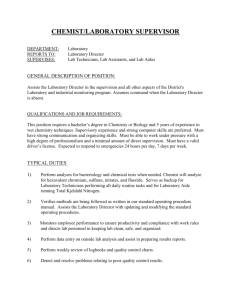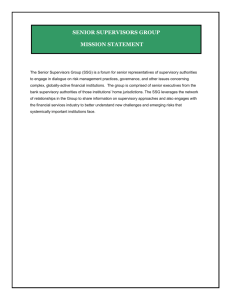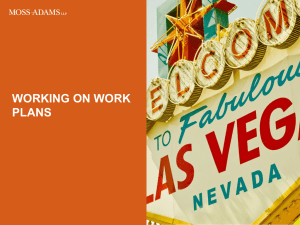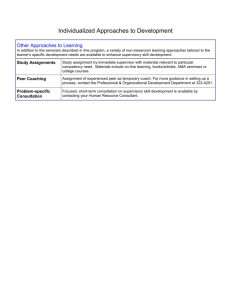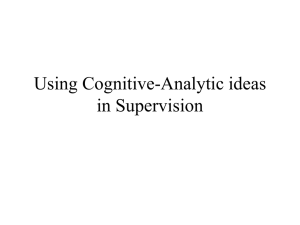Florida Division of Securities
advertisement
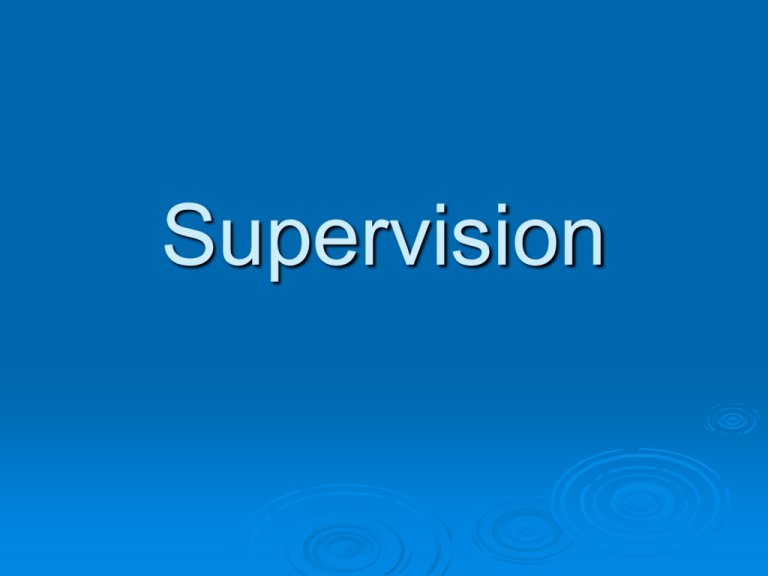
Supervision Supervision Every dealer is required to establish and maintain written supervisory procedures reasonably designed to supervise its employees’ compliance with state, FINRA, and federal securities laws. 2 The Standard of Reasonableness What is reasonable? Is the standard nebulous, hazy or vague? Does it require the firm to prevent every violation? Does it require the firm to detect each violation? (“Crystal Ball Standard”) If an agent commits a violation, is it obvious the firm failed to supervise him? (Respondent Superior) 3 The Standard of Reasonableness Requires the supervisory system be the product of sound thinking and common sense. In the simplest of terms, the supervisor has complied with the law if the firm’s procedures are adequate, he followed the procedures, and no red flags arose. Supervisor is not required to be omnipotent. 4 Rule Requirements Section 15(b)(4)(E) of the Securities Exchange Act of 1934 NASD Rules 3010 and 3012 and FINRA Rules 3130 and 3310 NASD Rule 3010 – Reasonable supervisory system to prevent and detect violations NASD Rule 3012 – Requires each member firm to designate and identify one or more principals who shall establish, maintain and enforce a system of supervisory control policies FINRA Rule 3130 – Designation to the on an annual basis of a principal of the member firm to serve as chief compliance officer. Designation must be made on Schedule A of the Form BD FINRA Rule 3310 – Supervisory system to establish procedures for anti-money laundering program 5 Basic Requirements of a Supervisory System – Rule 3010 Must be tailored to the firm’s business. No such thing as “one size fits all.” Firm is required to continually evaluate and change its procedures as necessary. Procedures must be written, adequate and address all aspects of the firm’s business Procedures should designate the person responsible for each functional area (i.e., sales, operations, compliance). Person must be qualified. (exam and experience) Each agent should be assigned a supervisor. 6 Basic Requirements of a Supervisory System – Rule 3010 Compliance should meet with each agent at least once a year. Meeting may be in person or via the internet. A principal must approve each transaction. Firm must investigate the background and qualification of prospective employees. Firms are required to investigate red flags, not simply rely on the agent’s word. 7 Supervision Good Centralized Comprehensive Customized Supported at highest levels of organization Continually reviewed and updated Testing and verification systems “baked in” Problematic Fragmented Partial Boilerplate Emphasis on form over substance No process to ensure policies/procedures are current Procedures manual gathering dust on shelf or agents don’t know how to access electronic version The best supervision cases are those built on an underlying violation by an agent. 9 Examination Steps to Detect Inadequate Supervision READ THE FIRM’S COMPLIANCE MANUAL! Do the procedures reasonably address, among others: • • • • • • • • Approval of order tickets and new accounts Frequent review of the agents’ activity Incoming and outgoing correspondence Processing of customer complaints Advertising Registration Branch office inspections Outside business activity/Selling away 10 Examination Steps to Detect Inadequate Supervision (cont.) • • • • Cashiering functions Hiring Anti-Money laundering Privacy 11 Examination Steps to Detect Inadequate Supervision Is the branch manager/supervisor following the procedures? Review the firm’s exception reports. How is the review of customer accounts and orders evidenced? What action does the firm take with respect to the exception reports? Review the firm’s customer complaints. Does the firm promptly and adequately follow up on red flags? 12 Examination Steps to Detect Inadequate Supervision Interview the branch office manager and agents. What is the ratio of managers to agents? How often does an agent speak with the manager? Review the firm’s internal audits. Are they meaningful and frequent? Are findings timely conveyed to branch office? Are problems corrected timely? Are problems allegedly corrected on previous audits found to be recurring on subsequent significant disciplinary audits? Review the supervision of agents with disciplinary problems. 13 Recurring Supervisory Problems Audits are inadequate Over reliance on checklists; no verification; no substance to the review No surprise audits Failure to audit Inadequate responses to red flags Findings allegedly corrected recur on subsequent audits Mechanical managers “Do nothing” compliance personnel No one assigned to supervise the agents Flat supervisory structure 14 Recurring Supervisory Problems Supervisors supervising themselves Little or no review of off-site agents No heightened supervision of agents with disciplinary history Supervisor geographically distant from the branch or agent Superficial internal investigations Relying solely on the agent’s statement regarding trading activity or in response to customer complaints. Growth of compliance department lags that of the firm “Blind eye” turned to actions of large producers 15 Proof Checklist Element of the Violation Firm failed to establish adequate written procedures Proof No supervisory procedures manual Records and/or testimony establishing the employee’s violation Evidence of red flags that were not followed up Testimony of the agent regarding supervision Always obtain and review a copy of the supervisory manual. 16 Proof Checklist Element of Violation Firm failed to enforce its own written supervisory policies Proof Obtain copy of supervisory procedures Records and/or testimony establishing the employee’s violation Evidence of red flags that were not followed up Testimony of the agent regarding supervision 17 Proof Checklist Element of Violation Firm had inadequate written supervisory procedures Proof Obtain copy of supervisory procedures Testimony of the supervisor’s understanding of the firm’s supervisory procedures Testimony from the examiner as to exactly which policy was not followed Important Considerations A supervisor is really only a “supervisor” if he or she has authority to impact behavior. Supervisors can be charged with failure to supervise if they become aware of red flags, but don’t take action. Be careful to differentiate between those people that are only in advisory roles (legal or compliance) with those that are in management roles. The law does not require the firm to prevent or detect all violations. 19 Important Considerations Be careful to avoid judging the firm based solely on hindsight. Put yourself in the manager’s shoes at the time the activity was occurring and ask whether the supervision was reasonable as opposed to perfect. SEC Commissioner Unger stated in 1999: “I believe the Commission must…resist the pitfall of mistaking the cleverness of a wrongdoer in eluding appropriate supervisory measures for a failure at the supervisory level.” 20

